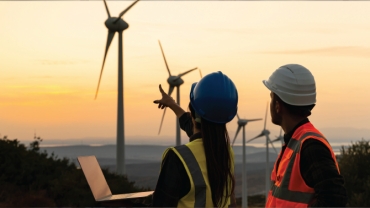
Now in its 19th year, PwC's Mine report examines the performance of the world’s 40 largest mining companies, and the trends impacting the industry.
Amid an accelerating industry-wide transformation, the world’s Top 40 miners posted stellar financial results for 2021. Revenues rose by 32% and net profits soared by 127% on the back of high commodity prices and prudent cost management. Combined with their strong performance in 2020, the Top 40 face the future in excellent financial shape. But how long the big miners can continue their record run is less clear.
This is a modal window.
mine-2022-video
Mining is experiencing unprecedented change in the race to net zero. With the demand for critical minerals surging, operating environments are even more challenging, and competition is increasing.
A new generation of miners are fast positioning themselves to deliver the critical minerals society is demanding. They are highly focused on meeting the evolving expectations of stakeholders and have reaped the rewards of acting quickly in this rapidly changing mining market.
What it means to be a miner is changing, and the Top 40 must keep up with the pace of that change.
Australia's miners in the top 40
Insights at a glance
Financial metrics
- Revenues (excluding trading) are up 0%
- Net profits are up 0%
- Capital expenditures are up 0%
- Dividends are up 0%
- Market capitalisation is up 0%
Critical minerals
Market cap for miners of critical minerals outperformed the Top 40 by between
0% and 0%
Demand for energy transition technologies will create
enormous annual growth for critical minerals
but supply shortages are a near-term risk.
ESG
ESG is no longer optional
It's the minimum operation standard
Deals
Deal values tripled
Deal volume increased by 0%
Gold is the largest deal driver.
Critical minerals deals gathering steam.
Explore this year’s key trends shaping the Top 40 and the Australian mining industry
The race to net zero is changing what it means to be a miner. Demand for critical minerals is surging, operating environments are getting more challenging and new players are emerging.
The rapid scaling of the low emission energy systems of the future—solar and wind power, electric vehicles (EVs) and grid-scale batteries—will be highly material-intensive. But providing resources for the energy transition is not simply a matter of mining more of the same materials in the same way. Instead, the world will need more critical minerals and raw materials to power the global economy of the future, and these resources will need to be mined sustainably.
A leading role
Demand for critical minerals is expected to grow significantly over the next three decades. The International Energy Agency estimates that the annual demand for critical minerals from clean energy technologies will surpass US$400bn by 2050, which is equivalent to the annual revenues of the current coal market. This might seem like a long way off, but miners are already struggling to keep up with the demand for critical minerals.
The Top 40 can play a leading role in the world’s clean-energy transition and generate significant stakeholder value while doing so. But they face some challenges.

Committed mine production and primary demand (2020-30)
The emerging ‘new miners’
The miners that are responding to the demand are reaping significant rewards.
In the 12 months through 31 December 2021, the market capitalisation of the Top 5 lithium, graphite and rare earth producers grew by 56%, 101% and 154%, respectively. By comparison, the Top 40’s market capitalisation grew by 7%.
processes Albemarle Corp. 0
Kemerton Lithium Hydroxide Processing Plant
Albemarle, a global specialty chemicals company and one of the world’s largest lithium producers, is constructing a lithium hydroxide processing facility at Kemerton, Western Australia. The Kemerton facility will handle feedstock from Albemarle’s stake in the Greenbushes lithium mine.
Production capacity:
60,000 tonnes per annum lithium hydroxide
July 2021
BHP entered into a nickel supply agreement with Tesla, from BHP’s Nickel West mine in Australia (one of the world’s lower-emissions nickel mines). BHP and Tesla will look to collaborate on ways to increase sustainability across the battery supply chain.













